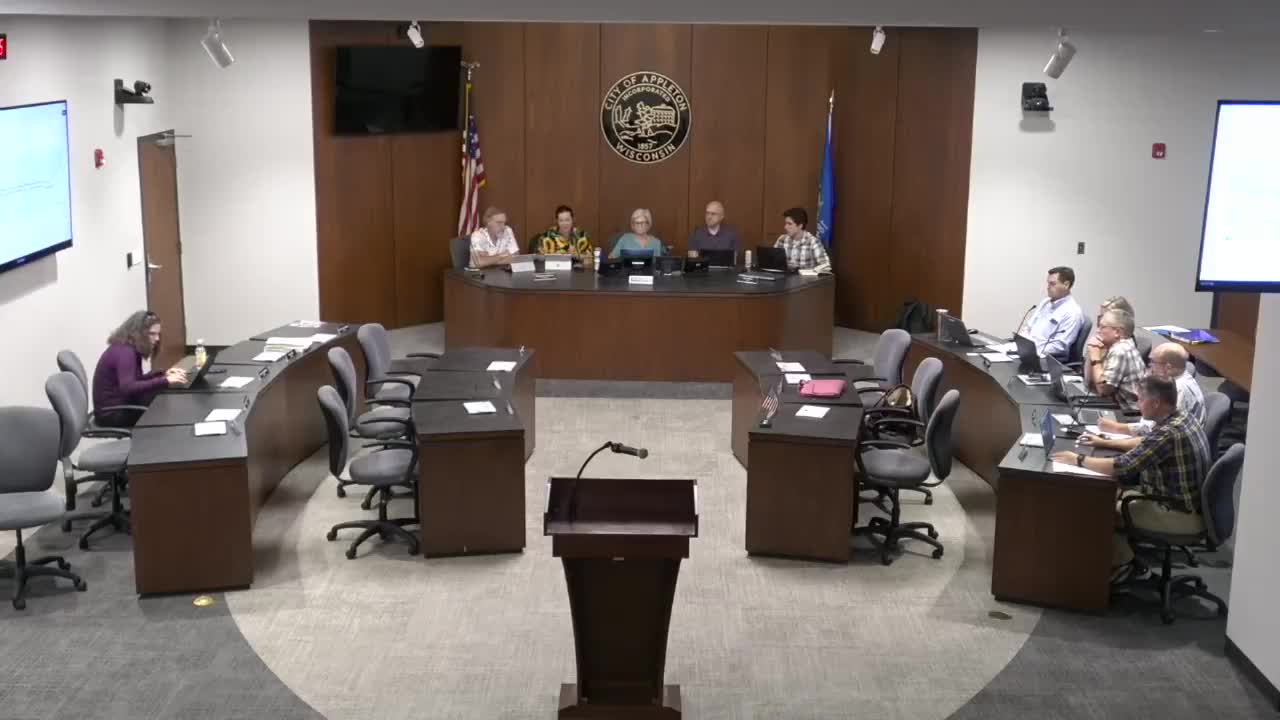Traffic Engineers Discuss 10-Foot Shared Use Path Standards at Badger Memorial Intersection
September 22, 2025 | Appleton City, Winnebago County, Wisconsin
This article was created by AI summarizing key points discussed. AI makes mistakes, so for full details and context, please refer to the video of the full meeting. Please report any errors so we can fix them. Report an error »

During the recent Municipal Services Committee meeting in Appleton, significant discussions centered around the design standards for shared use paths, particularly the necessity of a 10-foot width. This topic is crucial as the city seeks to enhance its infrastructure while balancing community needs and environmental considerations.
Alder Meltzer raised concerns about the impact of concrete installation on tree planting, questioning the rationale behind the 10-foot width requirement for shared use paths. The response from city officials highlighted that this measurement aligns with best practices established by various agencies, which recommend a minimum width of 10 feet for shared use paths to ensure safety and accessibility. In some instances, such as at the intersection of Badger and Sixth, the path width may be reduced to 8 feet due to spatial constraints, but the standard remains at 10 feet where feasible.
The discussion also touched on traffic volume, with a traffic engineer noting that approximately 30,000 vehicles pass through the Badger Memorial and Sixth intersection daily. This high traffic count underscores the importance of designing safe pathways for pedestrians and cyclists, especially in areas with significant vehicle movement. Alder Stansil Martin mentioned receiving feedback from constituents regarding these developments, indicating community engagement and concern about the proposed changes.
Overall, the meeting highlighted the city's commitment to improving transportation infrastructure while addressing environmental and safety considerations. As Appleton moves forward with these plans, the balance between development and community needs will be essential in shaping a more accessible urban environment. Further discussions and community input will likely play a critical role in finalizing these infrastructure projects.
Alder Meltzer raised concerns about the impact of concrete installation on tree planting, questioning the rationale behind the 10-foot width requirement for shared use paths. The response from city officials highlighted that this measurement aligns with best practices established by various agencies, which recommend a minimum width of 10 feet for shared use paths to ensure safety and accessibility. In some instances, such as at the intersection of Badger and Sixth, the path width may be reduced to 8 feet due to spatial constraints, but the standard remains at 10 feet where feasible.
The discussion also touched on traffic volume, with a traffic engineer noting that approximately 30,000 vehicles pass through the Badger Memorial and Sixth intersection daily. This high traffic count underscores the importance of designing safe pathways for pedestrians and cyclists, especially in areas with significant vehicle movement. Alder Stansil Martin mentioned receiving feedback from constituents regarding these developments, indicating community engagement and concern about the proposed changes.
Overall, the meeting highlighted the city's commitment to improving transportation infrastructure while addressing environmental and safety considerations. As Appleton moves forward with these plans, the balance between development and community needs will be essential in shaping a more accessible urban environment. Further discussions and community input will likely play a critical role in finalizing these infrastructure projects.
View full meeting
This article is based on a recent meeting—watch the full video and explore the complete transcript for deeper insights into the discussion.
View full meeting
